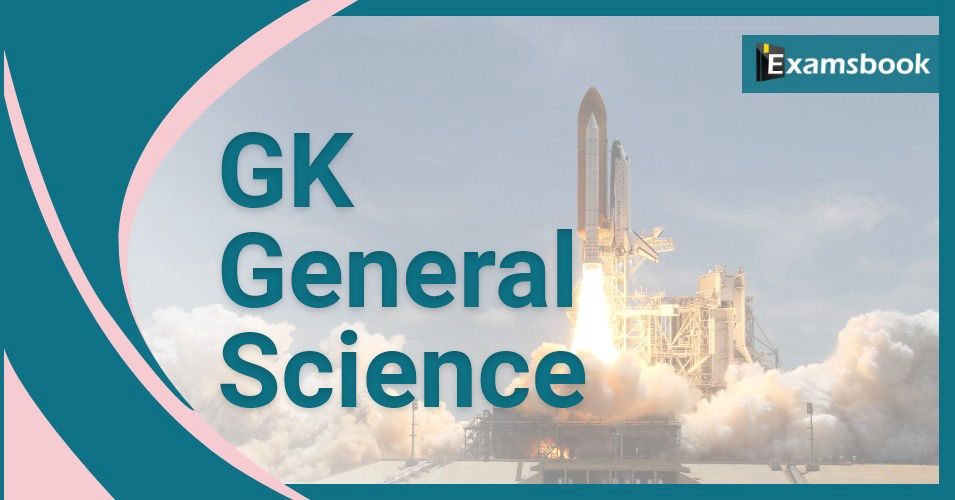GK General Science Questions and Answers for Competitive Exams

From which part of the plant turmeric is obtained?
(A) Root
(B) Fruit
(C) Flowers
(D) Stem
Correct Answer : D
Explanation :
Turmeric is the underground stem of a ginger-like plant (rhizome).
What is the formation of diploid endosperm directly from the diploid megaspore mother-cell called?
(A) Diploid sporulation
(B) Ectopic pregnancy
(C) Ambrosia
(D) None of these
Correct Answer : A
Explanation :
Diploid Sporosity:
The embryo sac, the master spore, is derived from the mother cell either directly by mitosis or by inhibiting meiosis. An eight-nucleated embryo sac is formed. This is a common process in plants like corn and wheat.
Where is the rare and emergency plant named Nipenthis Khasiana (Ghatparni) found?
(A) Himachal Pradesh
(B) Madhya Pradesh
(C) Meghalaya
(D) Uttar Pradesh
Correct Answer : C
Explanation :
Found mainly in the state of Meghalaya, India's only pitcher plant species Nepenthes khasiana is endangered, facing threats from mining, shifting cultivation, and excessive collection, among others. N. khasiana is distributed in the Garo, Khasi, and Jaintia Hills.
Deficiency of vitamin ‘X’ causes bleeding of gums. This vitamin is essential for the absorption of mineral ‘Y’ and ‘X’ is found in food ‘Z’. Identify X, Y and Z.
(A) X-vitamin D, Y- calcium, Z-milk product
(B) X-vitamin C, Y-iron, Z-citrus fruits
(C) X-vitamin B, Y-calcium, Z-green leafy vegetables
(D) X-vitamin A, Y-phosphorus, Z-poultry products
Correct Answer : B
Explanation :
Vitamin A deficiency can lead to night blindness and poor vision. B vitamins are a class of water-soluble vitamins. Vitamin B refers to several different types of vitamins that, together, are known as the B-complex vitamins. The commonly used Vitamin B Complex is constituted of 8 vitamins. Thiamin (vitamin B-1) Riboflavin (vitamin B-2) Niacin (vitamin B-3) Pantothenic acid (vitamin B-5) Vitamin B-6 Biotin (vitamin B-7) Folate (vitamin B-9) Vitamin B-12 Deficiency of Vitamin C can cause scurvy, a disease that is characterised by bleeding gums, skin spots, and swelling in joints. It also affects the immune system and can even be fatal in acute conditions. Vitamin C has been shown to enhance iron absorption. It captures non-heme iron and stores it in a form that's more easily absorbed by your body. Foods high in vitamin C include citrus fruits, dark green leafy vegetables, bell peppers, melons and strawberries. Citrus fruits are an excellent source of vitamin C. So from the above points, we can say that- 'X' = Vitamin C 'Y' = Iron (mineral) 'Z' = (Food) Citrus fruits
Metal ‘X’ displaces metal ‘Y’ from its salt solution but is not able to displace metal ‘Z’ from its salt solution. Identify the most reactive metal.
(A) X
(B) Y
(C) Z
(D) Cannot be determined.
Correct Answer : C
Explanation :
Metal 'X' displaces metal 'Y' from its salt solution, so 'X' is more reactive than 'Y'. Metal 'X' Can not displace metal 'Z' from its salt solution, so 'Z' is more reactive than 'X'
Species restricted to a particular area are referred to as
(A) Endangered species
(B) Extinct species
(C) Endemic species
(D) Migratory species
Correct Answer : C
Explanation :
Species that are restricted to a particular geographical area are called endemic species.
Which of the following glands in human beings secretes more than two hormones?
(A) Adrenal
(B) Pituitary
(C) Pancreas
(D) Thyroid
Correct Answer : B
Explanation :
Pituitary gland: It is a small pea-sized gland. It is often called the master gland as it controls several other hormone glands in our body. It is located in the brain between Hypothalamus and the Pineal gland. So, the pituitary gland in human beings secretes more than three hormones.
Identify the cell that is amoeboid in shape.
(A) Nerve cell
(B) Columnar epithelial cell
(C) Red blood cell
(D) White blood cell
Correct Answer : D
Explanation :
The correct answer is White blood cells. At the site of infection, white blood cells accumulate to destroy pathogens. Their amoeboid shape assists them to squeeze through blood capillaries and at the same time their pseudopodia help to kill pathogens by the process of phagocytosis.
What is the outermost layer found in the cell envelope of the bacterial cell called?
(A) Glycocalyx
(B) Cell membrane
(C) Plasma membrane
(D) Cytoplasm
Correct Answer : A
Explanation :
The correct answer is Glycocalyx. Glycocalyx: It is a surface layer that covers the cell membrane of many bacteria, epithelial cells or other cells. It is made up of proteoglycans, glycoproteins and glycolipids.
In what form is the energy derived from the food that we eat stored in our body?
(A) Maltose
(B) Glucose
(C) Glycogen
(D) Starch
Correct Answer : C
Explanation :
Energy derived from food in humans is stored in a type of ATP. The energy derived from food in humans is stored in a type of ATP. 2. Adenosine triphosphate is the main energy currency of the cell.



